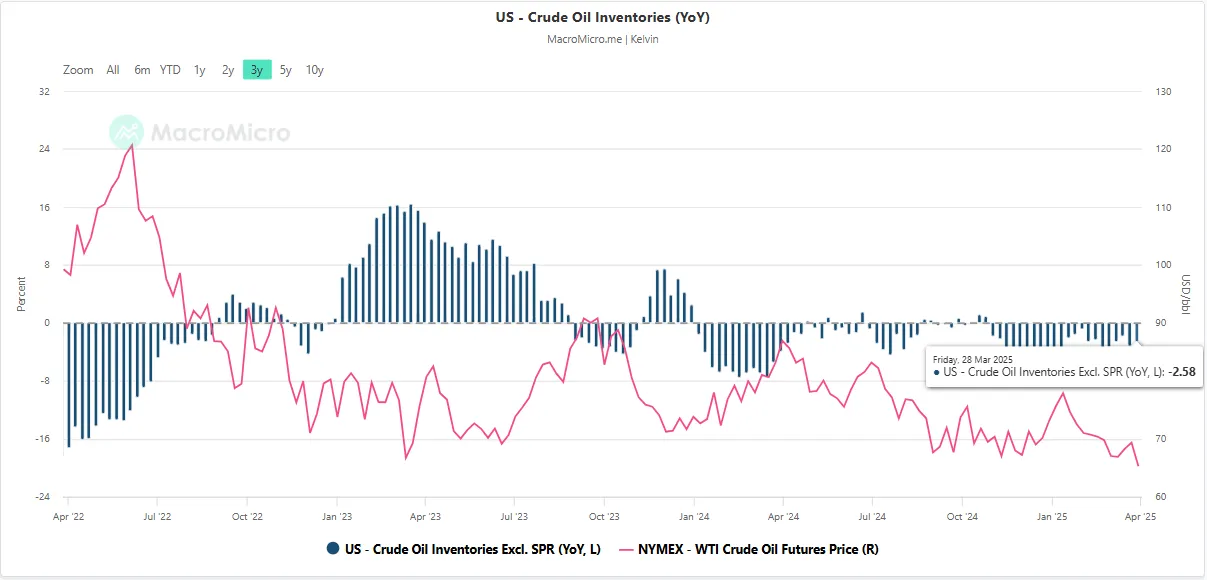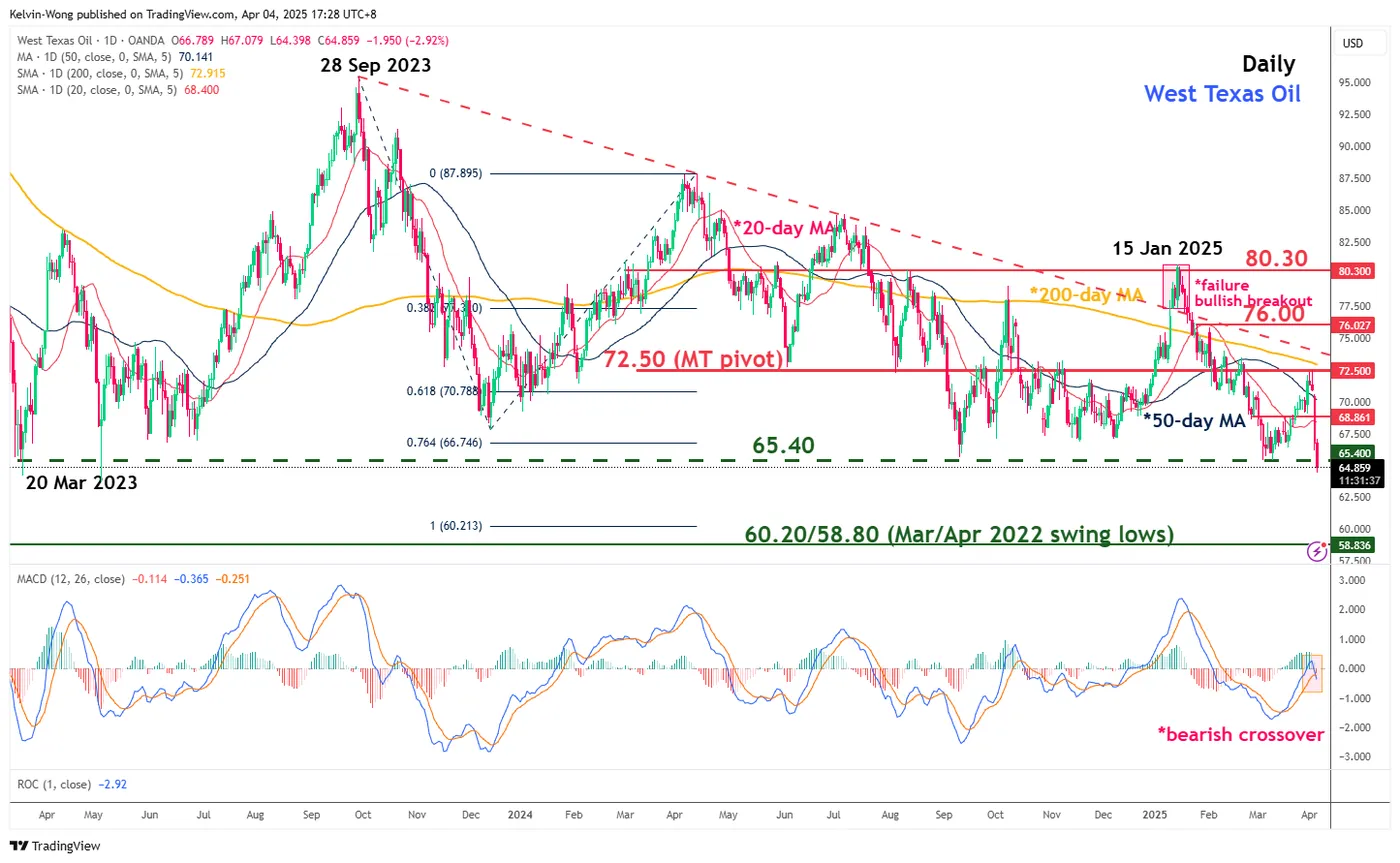- Global recession risk has triggered a significant drop in oil prices.
- WTI crude is now facing a negative double whammy from weak external demand and excess supplies built up.
- WTI crude is now breaching below a key major range support at US$65.40.
Since our last publication, the price actions of West Texas Oil CFD (a proxy of the WTI crude oil futures) have staged the expected corrective rebound sequence and rallied by 7.2% to print an intraday high of US$72.48/barrel on 2 April (a whisker below the US$73.50 medium-term resistance highlighted in our report) before the announcement of “US Liberation Day” reciprocal trade tariffs.
The West Texas Oil CFD has shaped a significant bearish reversal ex-post “US Liberation Day”, and plummeted by 6% on 3 April, its worst daily loss since early September 2022.
Headwinds From Weak Demand and Excess Supply

WTI crude has a negative double whammy hit caused by demand and supply factors. Firstly, the rising probability of a stagflation environment in the US has triggered a global recession alarm, in turn, weakening demand for oil as business activities slow down.
Secondly, OPEC+ producers have agreed to boost the cartel’s oil output by 411,000 barrels per day next month, coupled with a recent lesser magnitude of drawdown of US crude oil inventories seen in the past three weeks that may add another layer of downside pressure in oil prices.
The growth of US {{ecl-75||crude oil inventories} } excluding the Strategic Petroleum Reserve (SPR) on a year-on-year basis has an indirect correlation with the movement of WTI crude oil, as build-up in oil inventories puts downside pressure on oil prices.
Since 13 December 2024, the drawn down of US crude oil inventories (excluding SPR) has slowed down from -5.11% y/y to -2.58% y/y as of 28 March 2025 based on data from the US Energy Information Administration (EIA) (see Fig 1).
US65.40 Key Support Is Looking Vulnerable

Current intraday price actions of the West Texas Oil CFD (a proxy of the WTI crude oil futures) have recorded a further drop of 3.2% on Friday, 4 April, and breached below the major “Descending Triangle” range support of US$65.40 at this time of writing (see Fig 2).
In addition, the daily MACD trend indicator has just flashed out a bearish crossover condition, and inched below its centreline, which increases the probability of a major bearish breakdown below the US$65.40 major range support.
A daily close below US$65.40 may trigger the start of a medium-term bearish impulsive down move sequence to expose the next medium-term support zone of US$$60.20/58.80.
However, a clearance above the US$72.50 medium-term pivotal resistance (also the key 200-day moving average) invalidates the bearish scenario to kickstart another round of choppy corrective rebound phase for the next medium-term resistances to come in at US$76.00 and US$80.30
